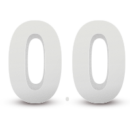What is Purchasing Managers Index (PMI)
The Purchasing Managers Index (PMI) is an economic indicator that measures the manufacturing sector’s health. It is based on a survey of purchasing managers in the manufacturing industry, who are asked about their opinions on various aspects of business conditions, such as production levels, new orders, employment, and suppliers’ delivery times. The PMI is calculated as a composite index based on the responses, with a reading above 50 indicating expansion in the manufacturing sector, while a reading below 50 indicates contraction. The PMI is considered a leading indicator of economic activity, as changes in the manufacturing sector often precede changes in the overall economy.
How the Purchasing Managers’ Index Works
The PMI is based on a monthly survey distributed to senior executives at more than 400 businesses in 19 primary industries, weighted according to how much they contribute to the U.S. GDP.
The five main survey areas that the PMI is based on new orders, inventory levels, production, supplier deliveries, and employment. Each of these survey categories is given equal weight by the ISM. The surveys include questions about business conditions and changes, including whether they are improving, staying the same, or getting worse.
The headline PMI is a number from 0 to 100.
A PMI above 50 represents an expansion when compared with the previous month.
A PMI reading under 50 represents a contraction, and a reading of 50 indicates no change.
The further away from 50, the greater the level of change.
The PMI is calculated as follows:
PMI = (P1 * 1) + (P2 * 0.5) + (P3 * 0)
Where:
P1 = percentage of answers reporting an improvement
P2 = percentage of answers reporting no change
P3 = percentage of answers reporting a deterioration
Other companies also produce PMI numbers, including IHS Markit Group, which puts out the PMI for various countries outside the U.S.
Data Collection
Members receive a monthly questionnaire that includes questions to collect data and identify month-over-month changes for the following ten business activities that also constitute individual indexes in the Report on Business Survey:
• New orders – from customers
• Production – rate and direction of change in the level of production
• Employment – whether increased or decreased.
• Supplier deliveries – are they slower or faster?
• Inventories – increases or decreases in stockpiles.
• Customer Inventories – rates the level of inventories held by the organization’s customers.
• Prices – reports whether organizations are paying more or less for products & services.
• Backlog of Orders – measures whether the order backlog is growing or declining.
• New Export Orders – measures the level of export orders.
• Imports – measures the rate of change in imported materials.
Each month, the questionnaires are distributed to members of the Business Survey Committee, who are only requested to report data for the previous month. The report is assembled by the ISM and released on the first business day of the following month. To provide the most accurate picture of current company activity, most survey participants wait to respond until the last week of the month.
When is PMI Released
The PMI is released monthly, usually near the middle of the month. The exact release date may vary depending on the country or region being monitored.
The Eurozone PMI is usually released on the 22nd.
The U.S. PMI is out on the first workday of the month.
It is important to check with the relevant sources for the PMI release schedule of a specific country or region.
How the PMI Affects Economic Decisions
The Purchasing Managers Index (PMI) is a leading indicator of economic activity that provides valuable information to decision-makers in various industries. It is based on a survey of purchasing managers in the manufacturing sector and reflects their opinions on the current and future state of the economy.
The PMI provides a snapshot of the manufacturing sector’s health, which is an important component of many economies. A high PMI indicates that purchasing managers are confident about the economy and are likely to increase their purchases of goods and services, which can lead to increased production and hiring. On the other hand, a low PMI suggests that purchasing managers are less confident about the economy and may reduce their purchases, leading to decreased production and layoffs.
The PMI influences economic decisions such as investments, hiring, and lending as it provides a forward-looking indicator of the economy. For example, investors may adjust their portfolios based on the PMI. In contrast, lenders may adjust the interest rates, they offer based on the level of economic activity reflected in the PMI. Similarly, companies may adjust their hiring plans based on the PMI, and governments may use it to guide monetary and fiscal policy. Thus, the PMI significantly impacts economic decisions and is closely monitored by various stakeholders.








